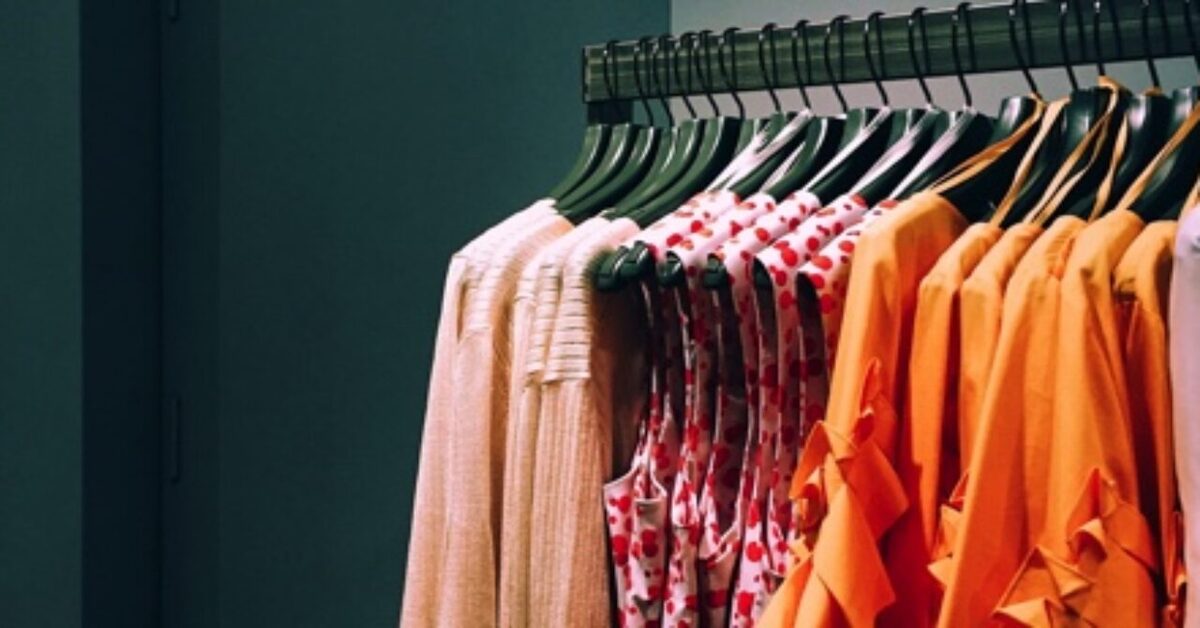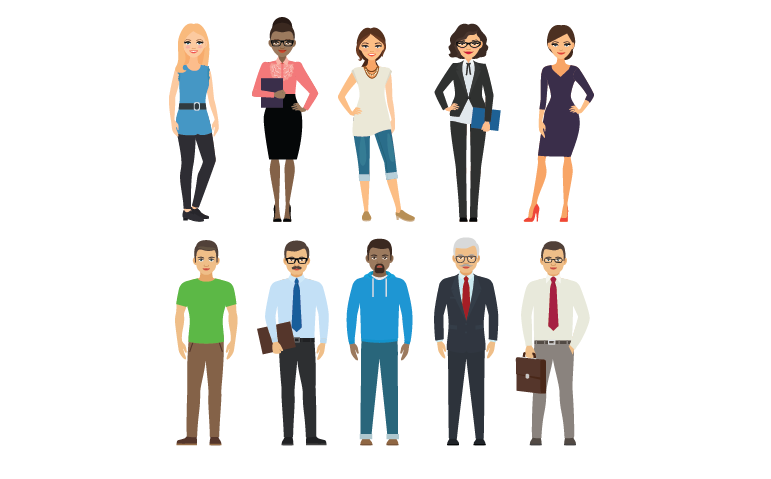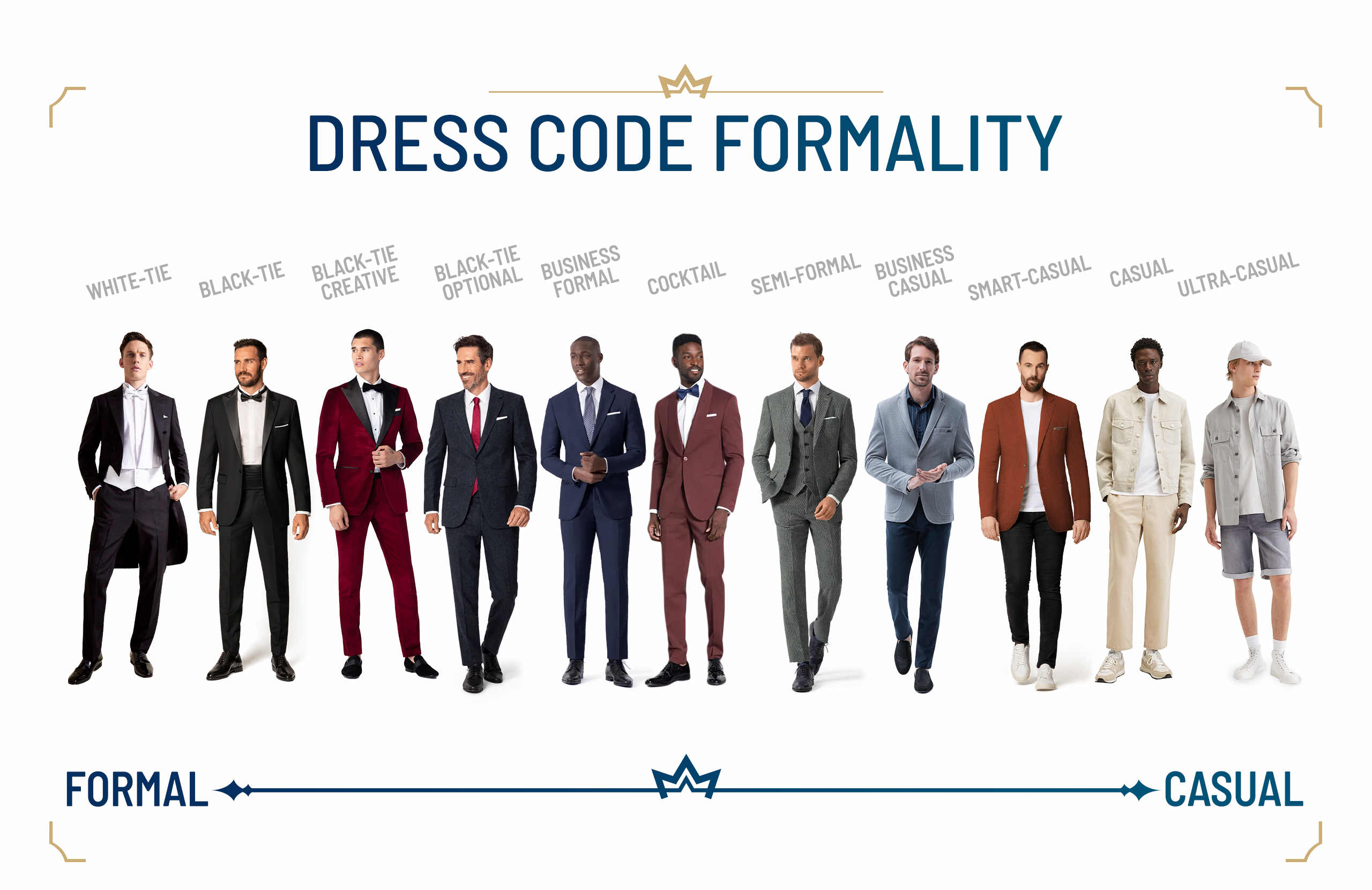
Dress Code – Discover the new look
Understanding dress code is essential because they guide appropriate attire for various settings, reflecting professionalism, safety, and cultural sensitivity. Knowledge of dress code ensures that individuals are well-prepared for specific occasions and contexts. Therefore, it will promote confidence and harmony within diverse environments. Let’s dive into the tips for a proper look!
What is dress code?

A dress code is a set of rules and guidelines established by an organization, institution, event, or place of business that specifies the appropriate attire that individuals are expected to wear in certain settings. Dress codes are designed to ensure that people present themselves in a particular manner that is considered suitable for the context and purpose of the situation.
Dress codes can vary widely depending on the context and the specific expectations of the organization or event. They can encompass various aspects of clothing and appearance, including clothing styles, colors, formality, accessories, and grooming standards. Also, they are often put in place to maintain a certain level of professionalism, safety, uniformity, or cultural sensitivity.
Why do we need dress code?

Dress codes serve several purposes and are implemented for various reasons, depending on the context and the organization’s goals. Here are some common reasons why they might be established:
1. Professionalism and Image:
In many workplaces and formal settings, a dress code is enforced to maintain a professional and polished image. This can help create a sense of respectability and competence, both for the individuals adhering to the dress code and the organization as a whole.
2. Safety and Functionality:
In certain professions or workplaces, dress codes are put in place to ensure the safety of employees. This might involve wearing specific clothing or equipment that provides protection against hazards, such as helmets, gloves, or specialized footwear.
3. Uniformity and Team Identity:
Dress codes can promote a sense of unity and belonging among employees or participants. Uniforms or standardized attire can help create a sense of team identity and equality, reducing distractions related to personal appearance differences.
4. Cultural Sensitivity & Customer Perception:
In diverse environments, dress codes can help ensure that clothing choices are respectful of various cultural norms and beliefs. This can prevent inadvertent offense or misunderstanding. In customer-facing industries, dress codes can influence how customers perceive the business. A well-dressed staff can convey professionalism, trustworthiness, and competence.
5. Maintaining Distinction or Event Specifics:
Dress codes can help distinguish different roles or levels within an organization. For example, managers might be required to dress more formally than entry-level employees. Events like weddings, parties, and ceremonies are often in place to ensure that attendees are appropriately attired for the occasion, adding to the atmosphere and formality of the event.
6. Preventing Inappropriate Attire:
Dress codes can prevent individuals from wearing clothing that might be deemed offensive, vulgar, or inappropriate for the context. This is particularly relevant in schools and workplaces. In educational settings, it can help minimize distractions and disruptions caused by extreme or inappropriate clothing choices.
It’s important to note that while dress codes serve these purposes, they can also be a subject of controversy if they are perceived as overly restrictive, biased, or insensitive. Striking a balance between the intended goals of the dress code and individuals’ freedom of expression is crucial.
Types of dress code
1. Formal dress code:
This typically requires individuals to wear formal attire, such as suits, ties, and formal dresses. It’s common at events like weddings, galas, and upscale parties.
2. Business Casual:
This is less formal than business attire, allowing for a more relaxed and comfortable style while still maintaining a professional appearance. It might involve khakis, collared shirts, blouses, and closed-toe shoes.
3. Casual dress code:
This allows for a more relaxed and informal style, often including jeans, t-shirts, and sneakers. It’s common in casual workplaces or social gatherings.
4. Smart Casual:
This is a blend of formal and casual, often involving dressier clothing paired with more relaxed elements. For men, it might include slacks and a collared shirt without a tie. For women, it could involve a dress or a blouse and skirt with stylish accessories.
5. Uniform:
Some professions or institutions require individuals to wear specific uniforms to promote a sense of belonging, identification, and professionalism. Examples include police officers, healthcare workers, and certain service industry roles.
6. Theme or Costume:
Events or parties might have a specific theme or require attendees to dress up in a particular style or costume.
Different guidelines for men & women in common situation
Dress codes can vary widely depending on the context, such as the type of event, workplace, or institution. Additionally, societal norms and standards change over time, so what is considered acceptable in one setting might not be the same in another. Here are some general guidelines for dress codes for men and women in different settings:

1. Business Professional:
- For Men:
Suit with a matching jacket and trousers.
Dress shirt, usually white or light-colored, with a tie.
Dress shoes and dark-colored socks.
Minimal accessories and conservative grooming.
- For Women:
Pant or skirt suit with a matching blazer and tailored pants or knee-length skirt.
Conservative blouse or button-up shirt.
Closed-toe dress shoes with a moderate heel.
Minimal, professional accessories and makeup.
2. Business Casual:
- For Men:
Dress slacks or khakis.
Collared dress shirt (tie may be optional).
Dress shoes and socks.
Optional blazer or sport coat.
- For Women:

Dress slacks, skirts, or dresses (knee-length or longer).
Blouse, sweater, or knit top.
Closed-toe shoes, flats, or low heels.
Simple jewelry and accessories.
3. Casual dress code:
- For Men:
Well-fitting jeans or casual pants.
T-shirt, polo shirt, or casual button-up shirt.
Casual shoes, such as sneakers or loafers.
Relaxed grooming and accessories.
- For Women:
Jeans, casual pants, skirts, or dresses.
T-shirt, blouse, sweater, or casual top.
Comfortable shoes like sandals, sneakers, or flats.
Minimal and laid-back accessories.
4. Formal Events:
For Men:
Tuxedo or formal suit.
Dress shirt with a formal bowtie or necktie.
Dress shoes and dark-colored socks.
Optional vest or cummerbund.
For Women:
Formal evening gown or cocktail dress.
Elegant shoes and heels.
Statement jewelry and accessories.
Formal hairstyle and makeup.
